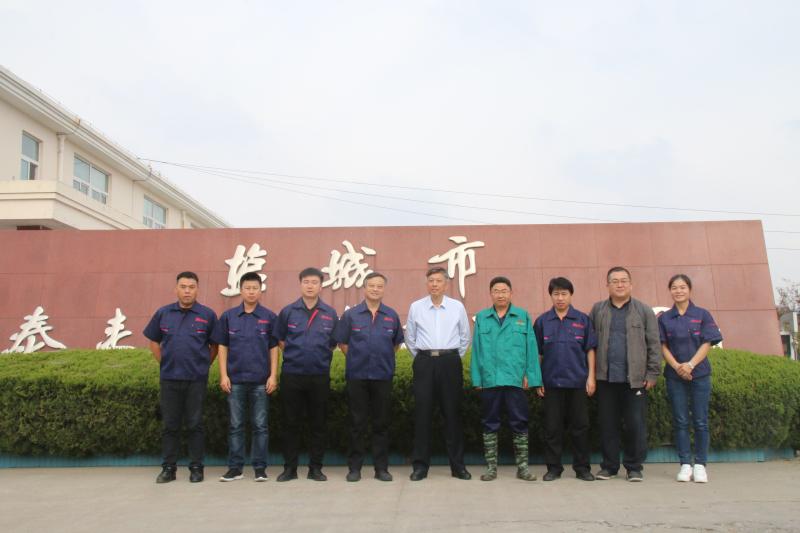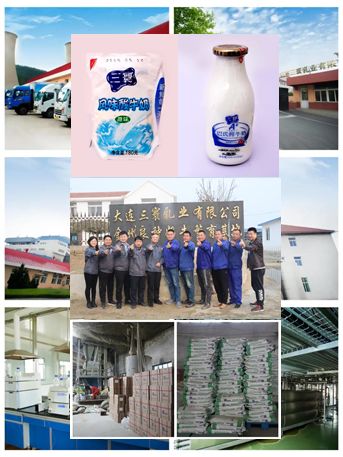In order to further promote the control and eradication of Newcastle disease and cow tuberculosis, the Ministry of Agriculture has recently formulated the National Guidance Opinions on the Prevention and Treatment of Newcastle Disease (2017-2020) and the National Guidance Opinions on the Prevention and Treatment of Tuberculosis in Dairy Cows (2017-2020).
Newcastle disease is a highly contagious avian infectious disease caused by a strong strain of Newcastle disease virus. The disease is highly contagious and has a high lethality rate, causing great economic losses to the poultry industry. "Opinions" pointed out that on the basis of continuously improving the anti-epidemic capacity of farms (households), it is planned that by the end of 2020, the country's great-grandfather and ancestor breeder farms will reach the purification standard (that is, with the farm as a unit, there will be no new city for more than two consecutive years Epidemic clinical cases and negative pathogenic test), the national poultry breeding industry area reached the control standard (that is, more than 12 consecutive months, the sampling rate of individual infection rate within the area is ≤0.1%).
Cow tuberculosis is a zoonotic infectious disease caused by Mycobacterium bovis. Dairy cows are the most susceptible, as are many animals such as buffalo, yellow cattle, yak, and deer. The "Opinions" pointed out that by the end of 2020, seven provinces (cities) including Beijing, Tianjin, Shanghai, Jiangsu, Zhejiang, Shandong, and Guangdong have reached purification standards, and the remaining areas have reached control standards.
The "Opinions" require that animal husbandry and veterinary departments around the country continue to adhere to the prevention-based prevention and control policy, with farms (households) as the main body of prevention and control, constantly improve the farm's biological safety system, and strictly implement immune prevention, monitoring and purification, quarantine supervision, and emergency disposal , Harmless treatment and other comprehensive prevention and control measures, actively carry out field group or area purification work, reduce the incidence, reduce the popular range, and gradually achieve the goal of purification.
The following is the full text of "Guidelines for the Prevention and Control of Tuberculosis in Dairy Cows (2017 ~ 2020)":
Guidelines for National Dairy Cow Tuberculosis Prevention and Control
(2017-2020)
In order to implement the National Medium- and Long-Term Animal Disease Prevention and Control Plan (2012-2020), effectively control and purify cow tuberculosis, and effectively guarantee the safety of animal husbandry production, animal product quality and public health, according to the "People's Republic of China Animal Epidemic Prevention Law ", To develop this guidance.
1. Current status of prevention
Cow tuberculosis is a zoonotic infectious disease caused by Mycobacterium bovis. Dairy cows are the most susceptible, as are many animals such as buffalo, yellow cattle, yak, and deer. The World Organization for Animal Health (OIE) lists it as an animal disease that must be reported, and our country lists it as a category 2 animal disease. In recent years, due to the increase in breeding volume and frequent transportation, the situation of cow tuberculosis prevention and control is not optimistic.
Second, prevention and control objectives
By the end of 2020, seven provinces (cities) including Beijing, Tianjin, Shanghai, Jiangsu, Zhejiang, Shandong, and Guangdong have reached purification standards, and the remaining areas have reached control standards.
Third, prevention and control ideas
Adhere to the principle of prevention first, adopt the control strategy of "according to local conditions, classification guidance, and gradual purification", with the farm (household) as the main body of prevention and control, constantly improve the farm's biological safety system, strictly implement monitoring and purification, quarantine supervision, and harmlessness Comprehensive prevention and treatment measures such as treatment and emergency treatment, actively carry out field and regional purification work, effectively remove pathogens, reduce morbidity, reduce the epidemic range, and gradually achieve the prevention and control goals.
4. Prevention measures
(1) Monitoring and purification
Different animal husbandry and veterinary competent departments should increase the monitoring of epidemic situation, timely and accurately grasp the distribution of pathogens and the dynamics of epidemic situation, scientifically assess the risks, and timely release early warning information. On this basis, formulate practical implementation plans for control or purification, and coordinate the advancement of prevention and control work by regions and steps. It is necessary to select a certain number of farms (households), slaughterhouses and trading markets as fixed monitoring points for continuous monitoring.
Farm farms should formulate control or purification schemes according to the requirements of "one disease, one case, one policy", and carry out planned prevention and control work in accordance with the actual conditions of the farm. Fight TB-positive cattle in time, and actively breed TB-negative herds of dairy cows.
(2) Quarantine supervision
Local animal health supervision agencies should strengthen the quarantine and slaughter quarantine of dairy cows, and gradually establish a quarantine mechanism based on laboratory testing and animal health risk assessment to improve the scientific level of quarantine. Strictly implement the "Provincial Quarantine Regulations on Trans-provincial Transfer of Dairy Animals and Breeding Animals", and do a good job in the quarantine and circulation supervision of the trans-provincial transfer of dairy cows.
(3) Biosafety management
Different animal husbandry and veterinary competent departments should speed up the promotion of standardized scale farming of dairy cows and promote industrial transformation and upgrading. It is necessary to strictly review the conditions for animal epidemic prevention, guide farmers to implement the sanitation and disinfection system, and improve the level of biological safety. Urge dairy farmers to do harmless treatment of sick and dead cows. Farmers must strictly implement anti-epidemic, production management and other systems, and build a continuous and effective biological safety protection system.
(4) Emergency treatment
The competent departments of animal husbandry and veterinarians in various regions should improve the emergency plan, improve the emergency mechanism, enrich the emergency epidemic prevention material reserve, strengthen emergency training and drills, and do all emergency preparations in accordance with the actual situation. In the event of an epidemic situation, in accordance with the principle of "early, fast, strict, and small", it shall be immediately disposed of in accordance with relevant emergency plans and technical specifications for prevention and control.
(5) Assessment and acceptance
Different animal husbandry and veterinary competent departments shall establish and improve the examination and acceptance system for the control and purification of tuberculosis of dairy cows, and carry out the control and purification assessment and acceptance of farms and regions in a timely manner.
Dairy farms that meet the control or purification standards may submit an application for assessment and acceptance to the local county animal husbandry and veterinary authorities. The local county animal husbandry and veterinary authorities shall report to the prefectural and municipal animal husbandry and veterinary authorities for examination and acceptance, and report to the provincial animal husbandry and veterinary authorities Department filing.
When the county (city, district) meets the control or purification standards, the county-level animal husbandry and veterinary administrative department shall submit an application. After the prefecture-level animal husbandry and veterinary administrative department passes the preliminary examination, it shall report to the provincial animal husbandry and veterinary administrative department for examination and acceptance.
Provincial (district, municipal) animal husbandry and veterinary authorities promptly announce to the public the results of the assessment and acceptance of dairy farms, county (city, district) administrative areas within the jurisdiction, and regularly publish the list of dairy farms and counties (cities, districts) that meet the control and purification standards .
The Ministry of Agriculture conducts assessment and acceptance of provinces (autonomous regions and municipalities), publishes the assessment and acceptance results in a timely manner, and regularly publishes the list of dairy cattle tuberculosis control and purification provinces (autonomous regions and municipalities) to the society.
V. Safeguards
(1) Strengthen organizational leadership
According to the relevant documents of the State Council, the local people's governments at all levels are responsible for the prevention and treatment of cow tuberculosis within their jurisdiction. The competent animal husbandry and veterinary authorities in all regions should actively coordinate with relevant departments and strive to incorporate the main tasks of the guidance opinions on the prevention and treatment of tuberculosis of dairy cows into the government assessment and evaluation index system. Under the unified leadership of the government, the competent animal husbandry and veterinary authorities in various regions should strengthen collaboration with relevant departments to formulate plans for the prevention and treatment of tuberculosis of dairy cows within their jurisdiction, and earnestly implement various measures to ensure that the prevention and control goals are achieved on schedule. Encourage inter-provincial or inter-regional joint prevention and joint control to jointly promote prevention and control.
(2) Strengthen technical support
Animal husbandry and veterinary authorities at all levels should strengthen resource integration, strengthen scientific and technological security, and improve the scientific level of cow tuberculosis prevention and treatment. It is necessary to rely on the technical strength of local animal epidemic prevention and control institutions and specialized laboratories for cow tuberculosis, to play the role of the National Animal Epidemic Prevention Expert Committee, analyze epidemic trends, strengthen technical guidance, put forward policy measures and suggestions, and provide technical support for prevention and control. Guide and promote the transformation of scientific and technological achievements, promote technology integration demonstration and promotion and application.
The animal husbandry and veterinary competent departments at all levels should cooperate closely with the dairy cow tuberculosis professional laboratory, actively carry out surveillance and epidemiological investigation, and find positive pathogenic samples should be promptly sent to the tuberculosis professional laboratory for analysis and identification.
Milk tuberculosis professional laboratory should continue to track the distribution of pathogens and the dynamics of epidemic situation, strengthen technical research such as diagnostic reagents, and put forward suggestions on prevention and control measures. The China Animal Disease Prevention and Control Center should strengthen the technical guidance for the prevention and treatment of tuberculosis in dairy cows, the China Veterinary Medicine Inspection Institute should strengthen the quality supervision of dairy tuberculosis diagnostic products, and the China Animal Health and Epidemiology Center should strengthen the investigation and analysis of cow tuberculosis epidemiology.
(3) Implementation of funding guarantee
Further improve the funding mechanism of "government guarantee, hierarchical responsibility, and participation of social forces". The animal husbandry and veterinary authorities at all levels actively coordinate with the relevant departments of finance, development and reform, and include the funds required for the prevention, control, extermination, surveillance, epidemiological investigation, quarantine supervision and harmless treatment of dairy tuberculosis in accordance with the law into the financial budget of this level. The dairy farms and county-level areas that took the lead in achieving the prevention and control goals are given priority in the declaration and funding arrangements for projects related to animal husbandry development. Actively cooperate with the finance and other relevant departments to strengthen the supervision of relevant funds, ensure that the funds are earmarked, and improve the efficiency of fund use. Actively mobilize and guide all sectors of society to provide support for the prevention and treatment of tuberculosis of dairy cows, and coordinate the resources of all parties in the society.
(4) Strengthen information management
The animal husbandry and veterinary authorities at all levels should establish and improve the information management platform for cow tuberculosis prevention and control, timely release the progress of cow tuberculosis prevention and control work, and timely update the information on cow tuberculosis control and purification farms and counties (districts, cities).
(5) Strengthen publicity and education and personnel protection
Animal husbandry and veterinary authorities at all levels make full use of various media to increase the awareness of cow tuberculosis prevention and control knowledge, enhance public awareness of epidemic prevention, and improve scientific breeding levels. It is necessary to strengthen the publicity and education of relevant practitioners, enhance their self-protection awareness, and reduce the risk of crowd infection. It is necessary to provide epidemic prevention personnel with necessary personal hygiene protective equipment, and strengthen education and training on personal protection.
VI. Supervision and Management
Different animal husbandry and veterinary competent departments should actively coordinate with relevant departments according to the requirements of this guidance, carefully organize the implementation, and ensure that various measures are put in place. The Ministry of Agriculture will provide regular supervision and guidance on the progress of prevention and control work in various regions.
Accessories
Control and purification standards
1. Control standard: Cows over 6 weeks of age are sampled and tested twice a year, the individual positive rate is less than 3% for 2 consecutive years, and the positive animals have been culled.
Take counties (districts, cities) as the unit, and counties that meet the control standard are controlled counties (districts, cities).
2. Purification standard: Cows over 6 weeks of age are sampled and tested twice a year. The positive rate of the individual for 2 consecutive years is less than 0.1%, and the positive animals have been culled.
Take counties (districts, cities) as the unit, and counties that meet the purification standard are purification counties (districts, cities).
Beijing Yahe Nutrition High-tech Co., Ltd. is willing to work with you to create the future and share success!
Yahe nutrition, healthy cattle and sheep, nourish humans.





